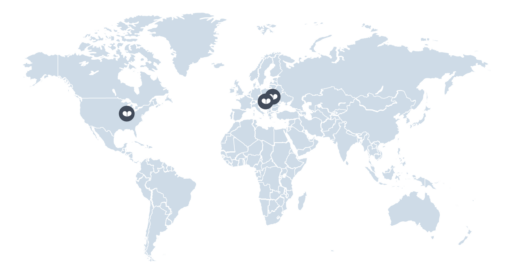If you feel like there’s an invisible ceiling stopping you from reaching a high cruising altitude with your marketing goals, it’s likely because your marketing structure isn’t complete.
You’re missing an essential tool in the cockpit, stopping you from taking your company soaring over the clouds. But it’s understandable because marketing operations (MOps) is still an obscure cell in most companies.
From improving communication and technology to streamlining your processes and enhancing data analysis, MOps can positively impact your marketing.
Read on to learn what MOps is, how it can help you, and why you should introduce it into your organization.
What is Marketing Operations?
Marketing operations (MOps) is a team that helps keep all the gears of your marketing
machine turning smoothly. They’re in charge of making sure everything from planning to
analysis runs well, using different tools and
systems to support your marketing efforts.
Think of them like the mechanics of your
marketing team – they keep everything running smoothly and help your business grow.

What Can MOps do for Your Marketing?
Now that you know what MOps is, let’s explore what it can do for you and your flight crew. Here are a few ways MOps can help you achieve your business goals:
1. Improve Marketing Efficiency
MOps team helps you streamline your processes and improves your marketing efficiency. It can automate repetitive tasks and reduce manual work, giving your marketing teams more time to focus on strategic initiatives.
2. Optimize Marketing Technology
One of MOps’ primary tasks is to evaluate your marketing technology (MarTech) stack and ensure you’re using the right tools to meet your goals. It can also help you optimize your tools and processes to get the most out of your investment.
3. Streamline Marketing Processes
By breaking down silos and fostering cross-functional collaboration, a MOps flight crew can create a more effective and cohesive marketing program. It helps you build a streamlined marketing process throughout the customer journey.
4. Enhance Data Analysis and Reporting

If you’re missing key insights to help you make better decisions, MOps is what you’ve been missing. A well-tuned MOps team can help you develop a data-driven approach to your marketing. It can collect and analyze data from across your marketing department, so you can gain insights to help optimize your campaigns and eventually improve your ROI.
How Does MOps Work in a Company?
Now that you understand what MOps can do for your marketing efforts, you probably want to see it in action. Let’s take the example of a mid-size retail company wanting to improve its marketing impact.
Now, let’s imagine they have a marketing crew for executing campaigns across various channels. But, they’re struggling to keep up with the pace of change in the industry. The company creates a MOps team to help streamline its processes, improve its results, and reduce turbulence.
The MOps team works closely with the marketing team to understand their needs and identify areas for improvement. They evaluate the company’s current MarTech stack and identify gaps and redundancies. They recommend new tools and technologies to help automate processes, such as marketing automation software, data analytics tools, and marketing resource management (MRM) platforms.
What’s more, they also take responsibility for managing the company’s data, ensuring that it’s safe, accurate, and up-to-date. They create reports, providing insights into the performance of marketing campaigns. And they use this data to make informed decisions to optimize their marketing budgets.
They’re responsible for managing the company’s website and ensuring it’s optimized for search engines (SEO) and user experience (UX). They work with the marketing team to create landing pages and other digital assets that support their campaigns.
Overall, the MOps team is a support function for the marketing department. It ensures marketing teams have the tools, data, and resources to execute effective campaigns. The marketing and MOps teams can achieve better results, higher altitudes, and drive business growth by working closely together.
How to Build and Implement a Successful
MOps Team
After reading the section above, you’re likely wondering how to add MOps to your company. Here are a few things you must consider before putting together your MOps team:
1. Conduct a Needs Assessment
Start by assessing your current marketing operations and identifying areas for improvement. This can help you determine what kind of MOps team you need and what resources you’ll need to invest in.
2. Hire the Right People
When hiring for your MOps team, look for candidates with a mix of marketing and technology skills. You’ll need people who can understand the big picture of your marketing program and also know how to use the tools and technology that support it.

3. Develop a Plan
Once you have your team in place, develop a plan that outlines your goals, KPIs, and processes. This can help ensure everyone is on the same page and working toward the same objectives.
4. Set Goals and Measure Results
Set attainable goals for your MOps team and track progress against those goals. This will help you determine the ROI of your investment in MOps and identify areas for improvement.
5. Foster Collaboration
MOps can’t operate in a silo – they must work closely with other teams across your organization. This includes marketing, sales, IT, and finance. Encourage collaboration and communication to ensure everyone is pulling in the same direction.
6. Improve Continuously
Marketing constantly evolves, so your MOps team needs to be agile and adaptable. Encourage a culture of continuous improvement and experimentation, and be willing to pivot when necessary to remain competitive.
What is the Basic Structure of an MOps Team?
The structure of a MOps team can vary depending on the size and complexity of the organization. However, here’s an example of a possible organizational structure for a MOps team:
- The Head of Marketing Operations is in charge of the MOps team and oversees its initiatives. They may report to the CMO or another executive within the c-suite.
- The Marketing Operations Manager works closely with the Head of Marketing Operations to manage the day-to-day operations of the MOps team. They may oversee specific functions within MOps, such as data analytics, project management, or technology.
- Data Analysts are responsible for analyzing marketing data. They identify trends, measure campaign performance, and provide insights to improve the marketing strategy.
- Project Managers handle marketing initiatives, ensuring that projects are executed on time and within budget. They coordinate with other teams within the organization when needed.
- Technology Specialists are responsible for managing the technology infrastructure supporting the marketing team. This may include tools for data analysis, marketing automation, and customer relationship management (CRM).
- Operations Coordinators manage the day-to-day operations of the MOps team. They can coordinate meetings, manage budgets, and provide administrative support.

Again, this is one possible structure for a MOps team. The specific roles and responsibilities may vary depending on your organization’s needs. However, this structure provides a good overview of the roles you can include within your MOps team.
Last thoughts
If you need help to achieve your business goals, it’s worth considering whether MOps could be the missing piece of the puzzle. Investing in a MOps team can improve efficiency, optimize technology, streamline processes, and help gain key insights from your flight data. So don’t overlook the power of MOps – it could be the key to smashing your marketing goals.
Author

Peter Fechter
Peter is Digital Marketing Manager at MARMIND and mainly responsible for website and lead management. When he's not busy creating content, he is developing new strategic approaches for campaign planning.
If you want to plan, manage, track, and execute marketing campaigns using an intuitive platform, MARMIND is the MRM you need. It’s highly customizable and molds itself around your unique marketing processes.
It brings your teams closer and streamlines communication, making you more productive and profitable. With MARMIND on your side, your teams have a constant overview of time, budget, and resources, acting as a compass guiding you toward your marketing goals.
If you’re the pilot of your marketing department, MARMIND is the cockpit that empowers you to steer your marketing to a higher altitude.










